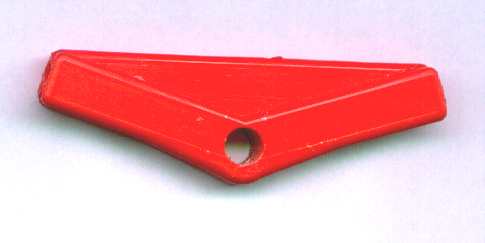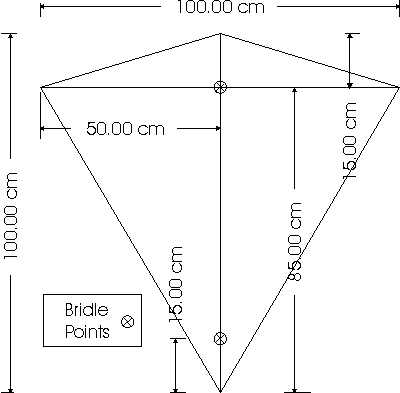Making kites that will not disappoint is a combination of patience and knowing the right materials and designs to use, most people remember kites that were, well, kind of kite shaped, in the kite world this kind of kite is generally an Eddy kite, now exactly how big you make it is up to you eddy kites have been made smaller than postage stamps and as big as houses, lets start somewhere in between, I suggest that as a beginning size around 1metre or for those less metric about 3 foot and 4 inches. That size is the same for height as it is for width.
| SAIL MATERIALS You can make this kind of kite out of any one of several different materials, depending on how serious you are or how much you want to spend. Here are a few possibilities for materials, in no particular order. Brown paper, Mylar, Wrapping paper, polyethylene, Ripstop nylon, Polyester cotton, Tyvek, Washi paper, etc. |
| RECOMMENDATION Ok so this is all getting a bit complicated, lets start simple and we will get something done, to begin with I recommend using something that does not require sewing, this means Paper, polyethylene, or mylar. whichever you chose doesn’t really matter just get whichever you can in a nice big sheet ( you can even join two or three pieces together if you must but be careful about weight and symmetry. |
Other Materials
Spars, these need to be ramin dowel, 6mm = 1/4 inch, diameter. (you can use bamboo, carbon fibre, or glass fibre also if you have it and it is even and regular) obviously you will need two pieces each at least 1 metre long.
String or line for the bridles of the kite and to fly the kite on, household linen string is not really suitable for this, try to get either some proper kite line or very strong fishing line braided is best. As a guide try to get around 50lb test (try asking at the fishing shop for dacron line)
Dihedral Piece – a very clever little piece of plastic which is placed in the middle of the cross spars it makes the wings of the kite point BACK not forwards this lets the wind spill and creates great stability in the kite. Here are a couple of scans of dihedral pieces.

Reflexive Analysis
I selected this article in search of materials used in kites. This information seems potentially useful to later understand materiality of models or what kinds of things can be used in light weight demonstrations of flight. While the kite this article shows is a very average kite, the website this article comes from has plans for many intricate and diverse kinds if kites. These different designs could be a valuable resource if the problem lends itself to creation of a flying or gliding object.
The full article describes each material individually and the process in detail of construction.
Sources
Charlton, C. (1998). So you want to make a kite but you don’t know where to start ! So you want to make a kite ! https://www.kiteplans.org/planos/soyouwant/soyouwant.html




